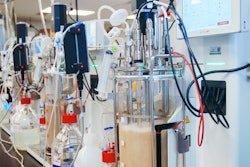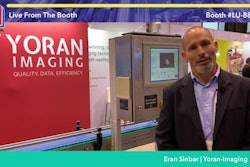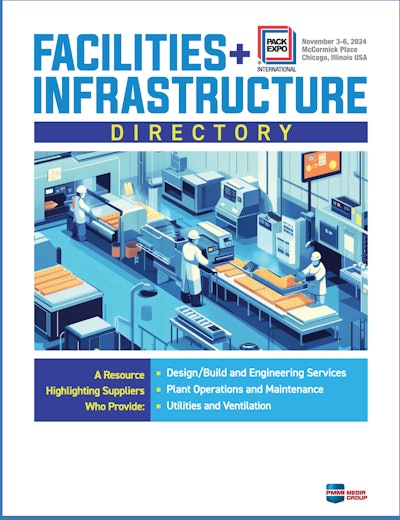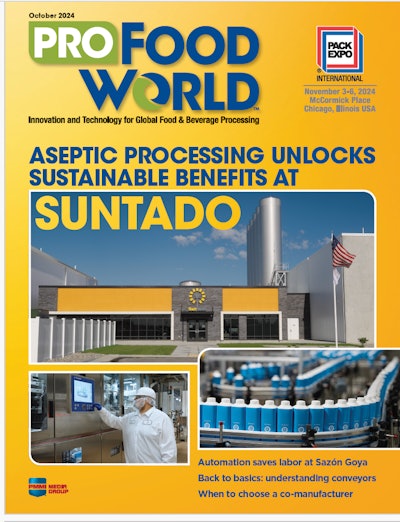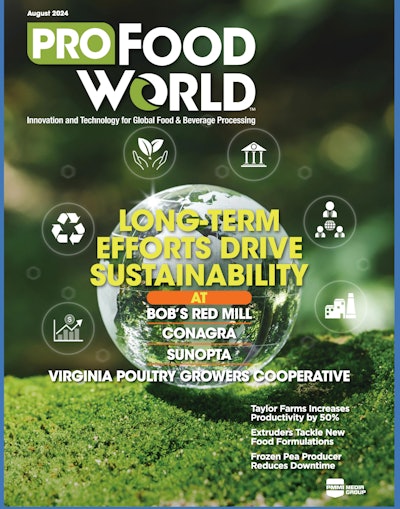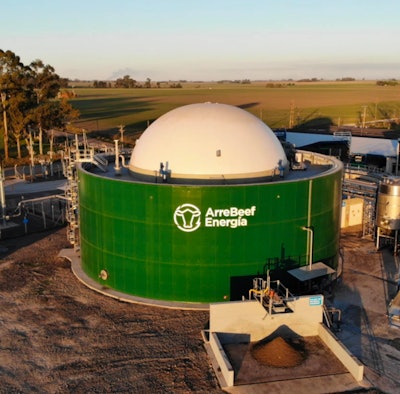
As food processing facilities prioritize sustainability and look for ways to reduce their environmental footprints, the popularity of anaerobic digesters has continued to rise. Anaerobic digesters help by converting organic waste into biogas, which can be used as a renewable energy source, and digestate, which can be used as fertilizer.
Although they come with considerable upfront cost, anaerobic digesters offer an efficient solution for managing organic waste, reducing the volume of waste that needs to be disposed of in landfills. Also, the biogas produced by anaerobic digesters can be used to generate electricity and heat, helping facilities to reduce energy costs.
However, the path to successful implementation has its share of challenges and complexities. In a recent webinar, Jason Bowman, director of industrial wastewater and biogas in North America for Fluence, sheds some light on the common pitfalls and strategic considerations essential for optimizing anaerobic digestion projects.
Project evaluation pitfalls
Not all projects are created the same—not even within the same industry sector. Fluence provides water and wastewater treatment solutions in such industries as meat and fish processing, dairy, brewing, and sweets and candies. Even within those sectors, variations in regulations, infrastructure, and logistics can significantly impact the design and operation of anaerobic systems.
Bowman describes these and other key project evaluation pitfalls:
1. Oversimplifying inlet characteristics
2. Assuming project similarities
3. Organic only focus
4. “No feed” periods
5. Incomplete characterization
6. Defining regulatory requirements
7. Incomplete mass balance
8. Focus on capex vs opex
9. Utilizing biogas
Bowman also touched on the importance of accounting for no-feed periods, such as nights, weekends, and annual shutdowns. “Understanding the frequency of the no-feed periods vs. the cleaning periods vs. the weekend shutdowns can impact how we design the anaerobic system,” he says.
 | PACK EXPO 2024 offers sustainability education programs. |
Understanding how your facility will use biogas is an essential preliminary evaluation at the initial stages of the project. It’s important to understand what the goals are, Bowman says. “Is this digester being used simply for pre-treatment, wastewater treatment, and surcharge reduction? Or are we trying to maximize every ounce of biogas that we can to help create energy on site?” he asks. “That absolutely drives the equation in these projects.”
System design pitfalls
Moving into the design phase, Bowman identifies 10 common pitfalls:
1. Overly focused on HRT and OLR
2. Failure to predict precipitation
3. Overly broad BMP assumptions
4. Assuming low rate is safer
5. Minimizing the importance of digestate
6. Incomplete picture of sulfur
7. Ignoring chemical balances
8. Overly large tankage
9. Control and automation flexibility
10. Design of ancillary systems
A critical point is the focus on hydraulic retention time (HRT) and organic loading rates (OLR). “There’s a lot more that goes into digester design than just HRT and OLR,” Bowman says. Solids retention time (SRT) is a crucial factor, influencing the stability and efficiency of the digestion process.
Historically (say, 30 years ago), HRT and SRT were exactly the same, Bowman says. “For every gallon that comes in, one gallon goes out,” he explains. “But over time, we’ve discovered that there’s a way to manipulate and control the bacteria so that we can recirculate bacteria two, three, four, five times, if we wish. So we can actually increase the solids retention time but reduce the hydraulic retention time.”
Bowman also explores the challenges of predicting precipitation and the importance of accurate biomethane potential (BMP) assumptions. The theoretical conversion for chemical oxygen demand (COD) to biomethane is that for every kilogram of COD you reduce, you’ll get about 12 cubic ft of methane. “Depending on the carbohydrate makeup, depending on the fat oil makeup, and depending on the protein makeup of what’s coming into these plants, your biomethane potential may not be this high,” he says.
It’s important to consider ancillary systems in the overall design. Heat exchangers, biogas cleaners, and dewatering units are not mere add-ons but integral components that directly impact the efficiency and effectiveness of the digester. “These tertiary ancillary systems directly impact the operation of that digester,” Bowman says, underscoring the need for a holistic approach in the design phase.
Acclimation and operation pitfalls
The final phase, acclimation and operation, brings to light the complexities of starting up and maintaining anaerobic digesters. Here are nine pitfalls:
1. Acidification and VFA
2. Alkalinity and nutrient control
3. Uncontrolled precipitation
4. Seeding
5. Temperature loops
6. Ramp-up period
7. Lab and monitoring
8. Consistency of feedstock
9. Digestate is expensive
“One of the biggest issues with the acclimation period in operation is acidification and volatile fatty acid [VFA] buildup,” Bowman explains. Careful feeding rates and alkalinity control are essential to prevent overwhelming the bacteria and ensuring a smooth startup.
Seeding, temperature control, and consistent monitoring are also important. “Having the ability to measure COD, locally, is critical,” Bowman emphasizes. Real-time analysis and consistent feedstock characteristics play a vital role in maintaining stable operations.
Another critical aspect is the integration of control and automation systems. Historically, digesters were relatively simple, but modern advancements have introduced sophisticated control mechanisms. “The ability to monitor and manipulate the solid retention time, how the bacteria do their work, can actually tremendously help these processes,” Bowman says. This technological integration not only enhances stability but also allows operators to predict and mitigate potential issues in real time.
The benefits of anaerobic digestion
While the initial investment in anaerobic systems can be substantial, the long-term savings and benefits often justify the costs. “What is often overlooked in these situations is the amount of money that these digesters can save in the end,” Bowman says. Factors such as reduced hauling costs, lower surcharges, and decreased reliance on external energy sources contribute to the overall economic viability of anaerobic digestion projects.
There are also environmental benefits to consider, Bowman adds. By converting organic waste into biogas, these systems not only reduce the volume of waste sent to landfills but also decrease greenhouse gas emissions. The biogas produced can be used as a renewable energy source, further enhancing the sustainability of industrial operations. This dual benefit of waste reduction and energy production positions anaerobic digestion as a key player in the push toward more sustainable industrial practices.

